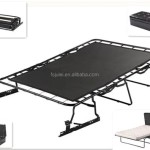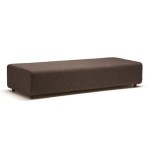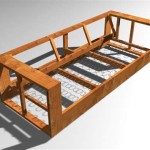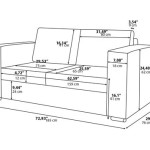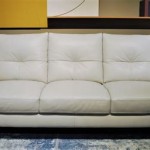Sofa Bed Won't Close: Troubleshooting Guide and Solutions
A sofa bed, also known as a sleeper sofa, represents a versatile piece of furniture, offering dual functionality as both a comfortable seating option and a supplementary sleeping surface. This adaptability makes it a popular choice for homeowners seeking to maximize space and accommodate overnight guests. However, a common frustration arises when the sofa bed mechanism malfunctions, preventing it from closing properly and reverting back to its sofa configuration. This issue can stem from various underlying causes, ranging from minor obstructions to more complex mechanical failures. Understanding the potential reasons behind this malfunction and possessing the knowledge to troubleshoot effectively is crucial for maintaining the functionality and longevity of the sofa bed.
When a sofa bed refuses to close, it disrupts the intended use of the furniture and can lead to inconvenience and frustration. Leaving it in an unfolded state occupies valuable floor space and potentially poses safety hazards. Therefore, systematically diagnosing the problem and applying appropriate solutions is paramount. This guide provides a comprehensive approach to identifying the reasons why a sofa bed won't close and outlines practical steps to rectify the issue, ensuring the furniture is restored to its operational condition.
Identifying Common Obstructions
The initial step in troubleshooting a sofa bed that won't close involves a thorough visual inspection to identify any potential obstructions hindering the mechanism's movement. These obstructions can be physical objects lodged within the frame, tangled bedding interfering with the hinges, or even misalignment of the various components. Overlooking these seemingly minor issues can lead to misdiagnosis and the unnecessary application of more complex solutions.
Begin by carefully examining the perimeter of the sofa bed frame, paying close attention to the areas where the folding mechanism operates. Look for any stray objects, such as pens, remote controls, or small toys, that may have fallen into the crevices and are impeding the smooth operation of the mechanism. Remove any discovered obstructions to clear the path for the bed to fold properly. Similarly, inspect the area beneath the mattress and within the frame for larger items like blankets, pillows, or even pieces of clothing that could be caught in the hinges or folding joints. These items can create significant resistance, preventing the sofa bed from closing completely.
Bedding, particularly sheets and blankets, can often become tangled within the folding mechanism, especially after prolonged use or improper storage. These tangled fabrics can create friction and resistance, preventing the smooth movement of the frame. Gently pull and untangle any bedding that is caught in the mechanism, ensuring that it is clear from all moving parts. In some cases, it may be necessary to completely remove the bedding and re-attach it after the sofa bed has been successfully closed.
Furthermore, examine the hinges and joints of the folding mechanism for any signs of misalignment. Over time, the weight and pressure exerted on the sofa bed can cause these components to shift or become slightly dislodged. Misalignment can create binding and prevent the frame from folding smoothly. If misalignment is suspected, carefully try to realign the components by gently pushing or pulling them into their correct position. Avoid forcing any movement, as this could potentially damage the mechanism further.
After a thorough inspection and removal of any identified obstructions, attempt to close the sofa bed again. If the problem persists, it indicates that the underlying cause may be more complex and requires further investigation.
Addressing Mechanical Issues and Lubrication
If visual inspection and obstruction removal fail to resolve the issue, the problem may lie within the mechanical components of the sofa bed's folding mechanism. These components, including hinges, springs, and support bars, are critical to the smooth operation of the sofa bed. Over time, these parts can become worn, stiff, or even corroded, leading to difficulty in closing the sofa bed. Lubrication and minor adjustments can often address these mechanical issues and restore the functionality of the mechanism.
The first step in addressing mechanical issues is to identify the specific points of friction within the folding mechanism. Carefully observe the movement of the frame as it is being closed, paying close attention to any areas where movement appears restricted or stiff. These are the areas that likely require lubrication. Use a lubricant specifically designed for metal-on-metal contact, such as a silicone-based spray lubricant or a lithium grease. Avoid using oil-based lubricants, as they can attract dust and dirt, ultimately exacerbating the problem.
Apply the lubricant sparingly to the hinges, joints, and any other moving parts within the folding mechanism. Ensure that the lubricant penetrates the tight spaces and reaches all areas where friction is evident. After applying the lubricant, repeatedly open and close the sofa bed several times to distribute the lubricant evenly and work it into the mechanism. This will help to loosen any stiffness and improve the overall movement of the frame.
In addition to lubrication, examine the springs and support bars for any signs of damage or misalignment. Springs are responsible for providing the necessary tension to assist in opening and closing the sofa bed. If a spring is broken or weakened, it can significantly impact the mechanism's performance. Similarly, support bars that are bent or misaligned can create binding and prevent the sofa bed from closing properly. If a spring is broken, it will need to be replaced with a compatible replacement part. If a support bar is bent, it may be possible to carefully straighten it using pliers or a similar tool. However, exercise caution to avoid further damage to the bar or the surrounding mechanism.
After lubricating the mechanism and inspecting the springs and support bars, attempt to close the sofa bed again. If the problem persists, it indicates that the issue may be more complex and requires professional assistance.
Dealing with Frame Damage and Repairs
In more severe cases, the reason a sofa bed won't close may be due to damage to the frame itself. This damage can range from minor dents and bends to more significant structural issues, such as broken welds or cracked supports. Frame damage can result from excessive weight, accidental impacts, or simply the wear and tear of prolonged use. Addressing frame damage often requires more specialized tools and skills and may necessitate professional repair or even replacement of the sofa bed.
Before attempting any repairs, carefully assess the extent of the damage. Identify the specific areas of the frame that are damaged and determine the severity of the damage. Minor dents and bends may be repairable with basic tools and techniques, while more significant structural damage may require welding or the replacement of damaged components. If the damage is extensive or if one lacks the necessary skills and tools, it is advisable to seek professional assistance from a furniture repair specialist.
For minor dents and bends, it may be possible to carefully straighten the frame using pliers, a hammer, and a block of wood. The block of wood is used to protect the frame's surface from damage while applying pressure with the hammer. Gently tap the damaged area with the hammer, working slowly and carefully to avoid further damage. If the bend is more severe, it may be necessary to apply heat to the metal using a heat gun or torch. This will make the metal more pliable and easier to bend back into shape. However, exercise extreme caution when using heat, as it can pose a fire hazard and can also damage the surrounding upholstery.
For structural damage such as broken welds or cracked supports, welding is often required to repair the frame. Welding involves using heat to fuse the broken metal pieces back together, creating a strong and durable bond. Welding requires specialized equipment and skills and should only be performed by a qualified welder. Attempting to weld without proper training can be dangerous and can also result in a weak or ineffective repair. An alternative to welding may be to use metal epoxy or other strong adhesive to bond the broken pieces together. However, this method is generally less durable than welding and may not be suitable for all types of frame damage.
If the frame damage is beyond repair or if the cost of repair is prohibitive, it may be necessary to replace the sofa bed. When considering a replacement, carefully evaluate the features and quality of different sofa bed models to ensure that the new sofa bed meets one's needs and will provide years of reliable service. Choosing a sofa bed with a sturdy frame and a well-designed folding mechanism can help to prevent future problems and extend the lifespan of the furniture.

3 Simple Ways To Open A Sofa Bed Wikihow
What S Wrong With The Sofa Bed When It Won T Sit Up Quora
What S Wrong With The Sofa Bed When It Won T Sit Up Quora
What S Wrong With The Sofa Bed When It Won T Sit Up Quora
What S Wrong With The Sofa Bed When It Won T Sit Up Quora
What S Wrong With The Sofa Bed When It Won T Sit Up Quora
What S Wrong With The Sofa Bed When It Won T Sit Up Quora

Lump Free Guest Bed 7 Easy Ways To Make It More Comfortable

Repairing A Sofa Bed Frame Thriftyfun

The 11 Best Sofa Beds In 2024 For Style And Comfort To Make Most Of Your Space

